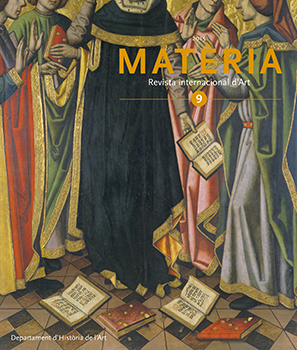Fashion, body and geometry in the twentieth century
DOI:
https://doi.org/10.1344/Materia2015.9.7Keywords:
fashion, geometry, body, silhouette, trends, women, postmodernismAbstract
Fashion experts classify the morphology of the female body using simple and composite geometric shapes, which can also be used to classify the resulting silhouette after dressing a woman. Looking closely at the main fashion trends that have governed the twentieth century, there are three groups according to the resulting silhouettes: the hourglass figure, made with two opposing triangles; the cylinder, and the inverted triangle. But if we analyze in detail the times in which they occurred, we discover that each represents and determines a particular female model with a distinct way of being and of interacting with males in the temporal context. Given these facts, we address the question of whether these associations are still active today, at a time when, as a result of the paradigm shift of Postmodernism, inverted pillars and structures of our thinking have undergone radical change.
References
BASTARDES, Teresa; VENTOSA, Sílvia, El cos vestit. Siluetes i moda, 1550-2015, Barcelona, Ajuntament de Barcelona, Institut de Cultura, Museu del Disseny de Barcelona, 2014.
BOUCHER, François, Historia del traje en Occidente, Barcelona, Gustavo Gili, 2009.
BRAND, Jam; TEUNISSEN, José, Fashion and imagination. About clothes and art, Arnehm, ArtEZ Press, 2009.
BREWARD, Christopher; GILBERT, David; LISTER, Jenny, Swinging sixties. Fashion in London and beyond 1955-1977, Londres, V&A Publishing, 2006.
BRUNA, Deni, La mécanique des dessous. Une histoire indiscrète de la silhouette, París, Les Arts Décoratifs, 2013.
CARNEGY, Vicky, Fashion of a decade. The 1980s, Londres, B. T. Batsford, 1990.
ENTWISTLE, Joanne, «Power dressing and the fashioning of the career woman», M. R. Soloman (ed.): The psychology of fashion, Nova York, Lexington Books, 1985.
ENTWISTLE, Joanne, Dress for success [en línia]. Disponible a: http://fashion-history. lovetoknow.com/fashionclothing-industry/dress-success
ESQUEVIN, Christian, Adrian. Silver screen to custom label, Los Angeles, The Monacelli Press, Random House Inc., 2008.
Estudio antropométrico de la población femenina en España, Madrid, Gobierno de España, Ministerio de Sanidad y Consumo, 7 de febrer de 2008. Disponible a: http://consumoinc.gob.es/novedades/docs/tallas
FLÜGEL, J. C., Psicología del vestido, Santa Cruz de Tenerife, Melusina, 2015.
JOHNSTON, Lucy, La moda del siglo XIX en detalle, Barcelona, Gustavo Gili, 2006.
LUCINI, Carmen, Bodyteca històrica, una investigació morfològica al servei de les col·leccions d’indumentària, Terrassa, Centre de Documentació i Museu Tèxtil, 2013.
LUSSIER, Suzanne, Art Deco fashion, Londres, V&A Publishing, 2009.
MARCKETTI, Sara B.; THOMSEN, Emily, «The trend for mannish suits in the 1930s», Dress. The Annual Journal of the Costume Society of America, vol. 39, núm. 2, 2013, p. 135-151.
MCDOWELL, Colin, The anatomy of fashion. Why we dress the way we do, Londres, Phaidon Press Limited, 2013.
MONTOYA, María Isabel, Moda y sociedad. La indumentaria: estética y poder, Granada, Universidad de Granada, 2002.
SEELING, Charlotte, Moda. El siglo de los diseñadores. 1900-1999, Madrid, Könemann, 2000.
STANFILL, Sonnet, Eighties fashion: from club to catwalk, Londres, V&A Publishing, 2013.
VINCENT, Susan J., The anatomy of fashion. Dressing the body from the Renaissance to today, Oxford, Berg, 2009.
WALFORD, Jonathan, Forties fashion, from siren suits to the New Look, Londres, Thames & Hudson, 2008.
WILCOX, Claire, The golden age of couture. Paris and London 1947-57, Londres, V&A Publishing, 2008.
Downloads
Issue
Section
License
The authors who publish in this journal agree to the following terms:
|  |







